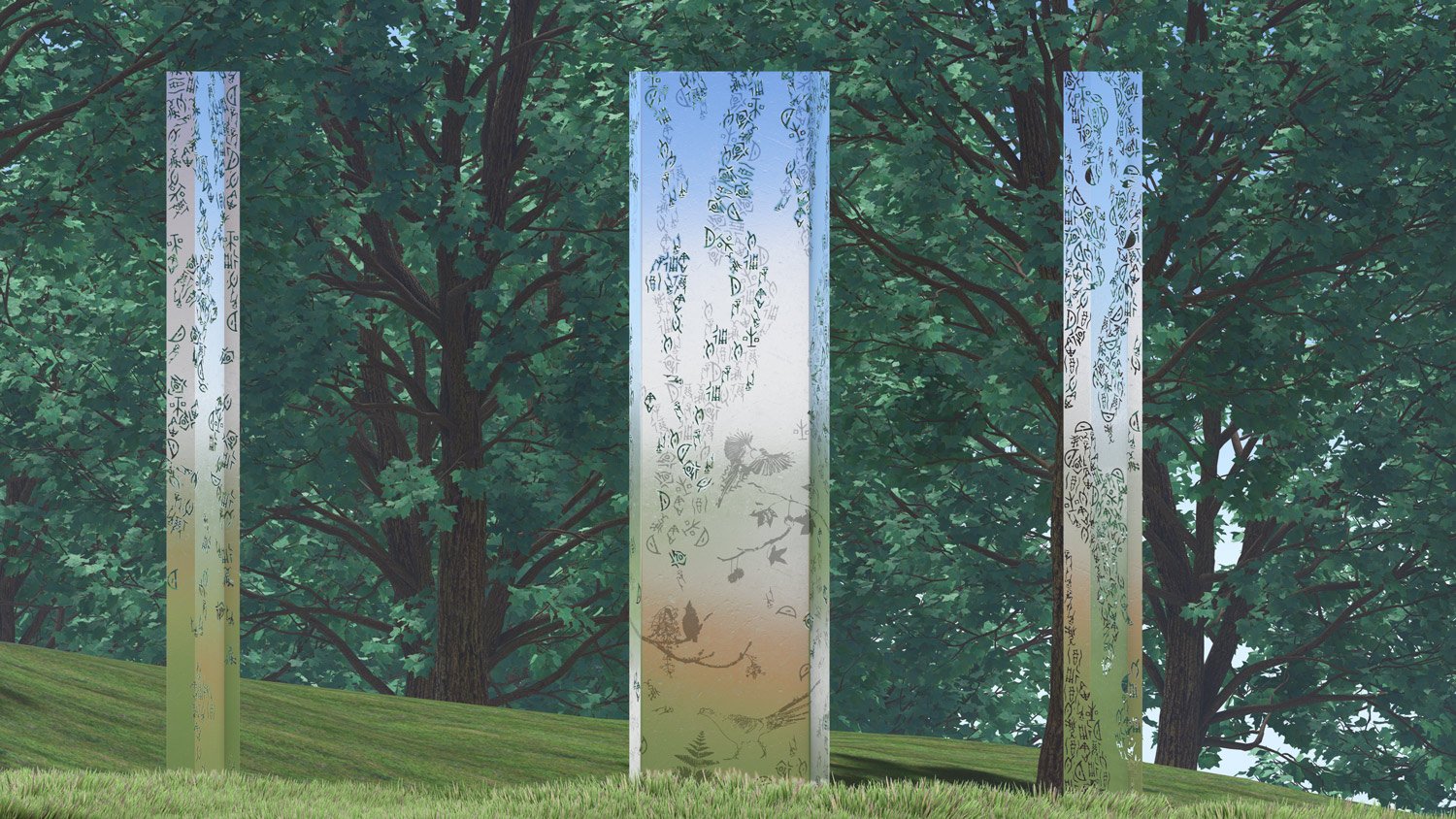“Sun Clock” Tainan Library Installation | Tainan, Taiwan
click arrow above to play our video proposal
Our proposal for the Tainan Library Art Competition embraces the concept of the library as both a repository of knowledge and a vessel for learning. At a global level, we explore how Tainan connects to a network of urban centers, while at a more intimate, highly local level, the installation reveals the unique conditions of the site itself.
The Sun Clock, as we’ve titled our installation, forges a celestial connection between the earth and the sky. Positioned carefully in the landscape, the monoliths create a dialogue with the sun, marking the passage of time and offering a tangible expression of the solar cycle. These monoliths interact with the natural topography, enhancing the site’s contours and inviting visitors to engage with both the art and the landscape in a new way.
Client: Tainan Library
Architects: B+P Architects
Status: Second Place Overall, Invited Competition
The installation reveals the daily shifts in sun angles, casting shadows across the ground plane and the monoliths themselves. The perforated surfaces of the monoliths allow light to pass through, creating dynamic patterns that evolve throughout the day. The interplay between the geometric precision of the monoliths and the organic undulations of the landscape creates a striking visual experience, where the monoliths appear to float above the ever-changing ground below.
Our design carefully considers the scale and placement of the Sun Clock within the park. It integrates seamlessly with the pathways, open spaces, and tree canopy, encouraging visitors to explore the entire site as a unified experience. The art installation acts as a palimpsest, layering onto the existing landscape while maintaining a delicate balance between the natural and the built environment. Sunlight plays a key role in animating this interaction, casting shadows that mimic the patterns of tree branches, creating a harmonious relationship between the monoliths and the surrounding environment.
The Sun Clock emerges naturally from the landscape, its orientation and placement carefully studied to align with the movement of the sun throughout the year. For instance, during the summer and winter solstice, visitors will have the unique opportunity to view the sun set through axial openings within the installation. During these celestial events, the sun aligns with the openings and a halo of light envelops the sculpture, bathing it in a majestic glow.
In designing the monoliths, we drew inspiration from the evolution of Chinese calligraphy. The panels display a gradual evolution of characters, transitioning from ancient script styles like Oracle Bone script and Jinwen of the Shang dynasty to Small Seal script of the Eastern Zhou dynasty, Clerical script from the first millennium BCE, and culminating in Regular script, reflecting on its evolution from the ancient oracle bone script of the Shang Dynasty to the contemporary Xiao Shu of the Han Dynasty. The monoliths reflect this cultural history while simultaneously engaging with the park's natural elements. The intricate patterns on the monoliths mimic the texture of tree bark, signifying a connection to the region’s flora and fauna, including the iconic blue magpie.
As the monoliths rise towards the sky, they begin to dematerialize, creating a seamless transition between earth and air. This design fosters a strong relationship between the scale of the monoliths and the human body, inviting interaction and reflection. The Sun Clock extends the life of the park, engaging visitors in both morning and afternoon, as the shifting light transforms their experience of the space.
Sun Clock uses the interplay of light and shadow to chronicle the rich history of Chinese characters. Strolling through the park evokes the sense of wandering through a “museum of books,” offering a new perspective of the relationship between nature, history, and culture.















